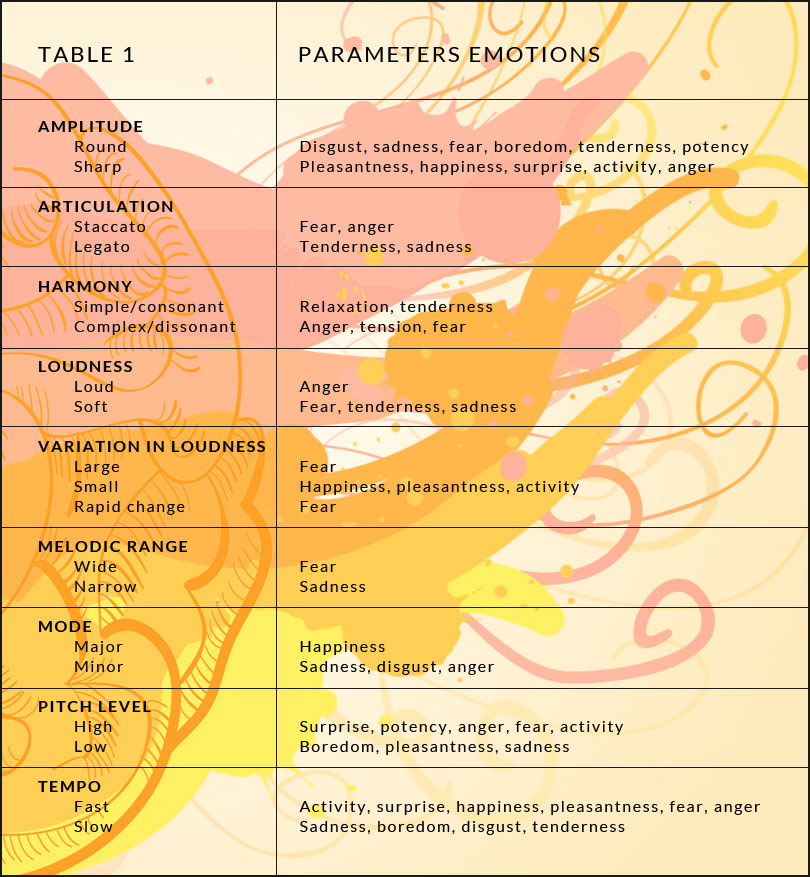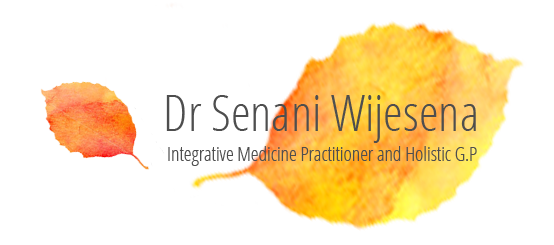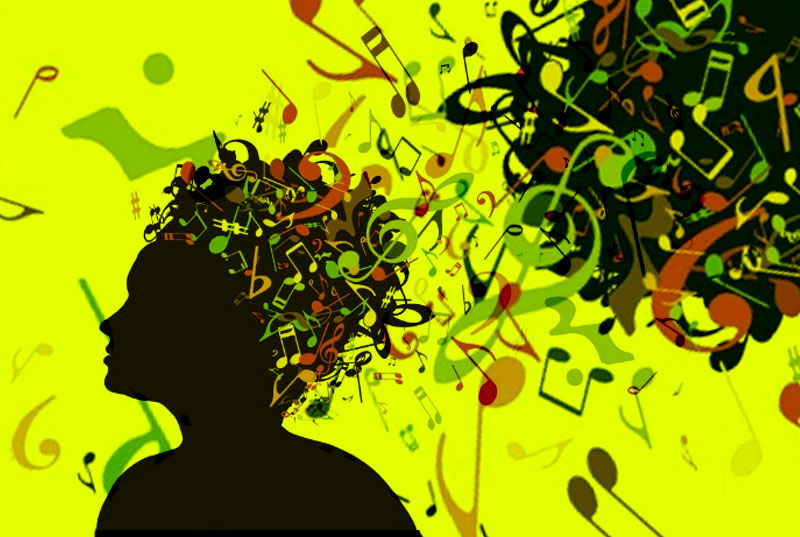17/07/2017 Written by Dr Senani Wijesena
Introduction
Everything in the universe (matter, thoughts, emotions, sound, light) is made up of energy, which vibrates at varying frequencies. The energy of each form including thought form/ sound form interact with each other. At the quantum level, nothing is solid, even matter as it is made of atoms with spaces in between which when further analyzed are composed of vibratory energy.
Due to the nature of everything, sound which is defined as vibrations transmitted through an elastic material or a solid, liquid, or gas, with frequencies in the range of 20 to 20,000 hertz, capable of being detected by human organs of hearing, can interact with and affect other solid and non-solid elements of the universe including human tissue (organs/cells), emotions, the mind and spirit.
It has long been noted that particular sounds have a direct effect on the body’s ability to heal from disharmonious states of disease, from imbalances associated with anxiety to nerve disorder and cancer. Recent advances in western medicine show how sound affects us on a cellular level and can have broad, physiologic healing results. Modalities shown to have beneficial effects include listening to music, toning, humming, chanting and giving one’s attention to the sounds of various instruments.
Music is the art of sound in time, expressing ideas and emotions in significant forms through the elements of melody, harmony and colour. Tones or sounds occurring either in a single line (i.e. melody) or in multiple lines (i.e. harmony) and the feeling of movement of sound in time (i.e. rhythm) are the essential elements of music. Throughout history, people, including ancient Greek philosopher Plato (428-347 BC), considered that music played in different modes would arouse different emotions and noted a link between music and the mind. The ability of music to increase physical work activity has been documented for 2,800 years. In ancient Greece, the kithara (a harp-like instrument held on the lap) and flute music was played during the Olympic games with the goal of improving sporting activities. It has been shown that this led to better athletic performances (improvement 15%). It has also been noted consistently that certain types of music could also induce stress and aggressiveness and other types could enhance positive or calming emotions.
The history of the relation between music and the mind is skewed to the effects of music on one function of the mind- emotion. However, studies investigating the neurobiological basis of music have intrinsically linked music to various other brain functions as well.
Music and the brain
The human nervous system processes music in different ways- perceptual processing, emotional processing, autonomic processing, cognitive processing and behavioral or motor processing.
Brain scans of people taken while listening to music reveal that music perception emerges from the interplay of activity in both sides of the brain. The right side of the cortex is crucial for perceiving pitch as well as certain aspects of melody, harmony, timbre and rhythm. The left side of the brain in most people excels at processing rapid changes in frequency and intensity in both music and words. Both the left and right sides are necessary for complete perception of rhythm. The frontal cortex of the brain, where working memories are stored, also plays a role in rhythm and melody perception. Other areas of the brain deal with emotion and pleasure.
Emotions/Autonomic processing
The amygdala, cingulate gyrus and medial orbitofrontal cortex are regions of the brain involved in processing of emotional behaviors. As these structures are found to have auditory (sound) projections, they are proposed to be involved in the emotional processing of music. There is evidence to suggest that music activates these regions. Table 1 shows the relation between various parameters of the music and different emotions. There is no specificity in the association of a particular parameter with one particular emotion i.e. same emotions can be perceived by different musical parameters.
 Studies have shown that different neuronal responses and activation of different parts of the brain occur to pleasant and unpleasant music. For example, brain activity is present predominantly in the frontal lobes for pleasant music and in the temporal lobes for unpleasant music.
Studies have shown that different neuronal responses and activation of different parts of the brain occur to pleasant and unpleasant music. For example, brain activity is present predominantly in the frontal lobes for pleasant music and in the temporal lobes for unpleasant music.
Music has been found to alleviate stress responses/anxiety and also elevate mood in individuals with depression. The experience of stress arises when an individual perceives the demands from the environment as taxing or exceeding his or her resources and endangering his or her wellbeing. The two major stress systems that are linked with the central nervous system/limbic system (mind) are the hypothalamus-pituitary-adrenal (HPA) axis and the sympathetic nervous system (SNS) i.e. endocrine and autonomic responses respectively. Together, the HPA axis and the SNS orchestrate various psychological (e.g. emotional processing) and physiological (e.g. endocrine and cardiovascular activation) processes to ensure the maintenance of the homeostasis (equilibrium) of the organism that is challenged by the experience of stress. The main effector of the HPA axis is the so-called ‘stress’ hormone, cortisol. Research on potentially beneficial effects of music listening on HPA axis functioning i.e. on stress-induced cortisol release, has only recently been established. Significant positive changes in cortisol were reported when listening to music before and/or during medical interventions considered stressful (decreases and lower increases in cortisol) and after such interventions (greater reductions in cortisol). Laboratory studies show mixed results however on cortisol responses to music.
The research on beneficial effects on SNS parameters has a longer tradition: A series of clinical and laboratory-based studies revealed that listening to music can decrease sympathetic activity (adrenaline/noradrenaline release). The sympathetic nervous system (SNS) affects/controls heart rate, heart muscle contraction, skeletal muscle contraction, blood vessel dilation, respiration, pupil size, sweat gland secretion (i.e. the flight/fight or freeze response).
Music has been found to induce relaxation and to alter pain perception, blood pressure and respiratory and heart rates. Soft, slow, non-lyrical music significantly decreases systolic blood pressure, heart rate, respiratory rate and oxygen saturation. Music with a faster tempo significantly increases heart rate, minute ventilation, blood pressure and sympathetic nervous activity and music with complex rhythms increased, though insignificantly, the same parameters.
In addition to its effect on cortisol and the SNS, dopamine has been postulated to be involved in the enjoyment of music. It has been demonstrated to be released from the ventral striatum and in the ventral tegmental area of the brain in subjects listening to pleasant music, particularly during peak moments (anticipatory release). Dopamine release arouses feelings of euphoria and craving (pleasure and reward). This sub-region of the striatum is interconnected with sensory, motor and associative regions of the brain and has been typically implicated in learning of stimulus-response associations and in mediating the reinforcing qualities of rewarding stimuli such as food. In addition to dopamine, the role of endorphins/endocannabinoids and nitrous oxide in emotional perception of music and in producing physical effects such as vasodilatation, local warming of the skin and a reduction in blood pressure as a response to listening to music respectively have been described. A study has found that listening to techno music is accompanied by a significant increase in plasma norepinephrine (stress hormone), B-endorphin, adrenocorticotropic hormone (ACTH), cortisol and growth hormone. However, while listening to classical music, no significant changes were detected in hormonal concentrations.
The Mozart Effect.
 In 1993 Rauscher et al made the surprising claim that, after listening to Mozart’s sonata for two pianos (K448) for 10 minutes, normal subjects showed significantly better spatial reasoning skills (the ability to mentally move objects in space and time to solve multi-step problems) than after periods of listening to relaxation instructions designed to lower blood pressure or silence. The mean spatial IQ scores were 8 and 9 points higher after listening to the music than in the other two conditions. The enhancing effect did not extend beyond 10-15 minutes. These results proved controversial. Some investigators were unable to reproduce the findings, however, others confirmed that listening to Mozart’s sonata K448 produced a small increase in spatial-temporal performance, as measured by various tests derived from the Stanford-Binet scale such as paper cutting and folding procedures or pencil and paper maze tasks. However, Rauscher has stressed that the Mozart effect is limited to spatial temporal reasoning and that there is no enhancement of general intelligence.
In 1993 Rauscher et al made the surprising claim that, after listening to Mozart’s sonata for two pianos (K448) for 10 minutes, normal subjects showed significantly better spatial reasoning skills (the ability to mentally move objects in space and time to solve multi-step problems) than after periods of listening to relaxation instructions designed to lower blood pressure or silence. The mean spatial IQ scores were 8 and 9 points higher after listening to the music than in the other two conditions. The enhancing effect did not extend beyond 10-15 minutes. These results proved controversial. Some investigators were unable to reproduce the findings, however, others confirmed that listening to Mozart’s sonata K448 produced a small increase in spatial-temporal performance, as measured by various tests derived from the Stanford-Binet scale such as paper cutting and folding procedures or pencil and paper maze tasks. However, Rauscher has stressed that the Mozart effect is limited to spatial temporal reasoning and that there is no enhancement of general intelligence.
Brain areas concerned with mental imaging as tested by spatial temporal tasks (such as the building of three dimensional cube assemblies in sequences) have been mapped by PET scanning. The results show that the areas activated include the prefrontal, temporal and precuncus regions, which overlap with those involved in music processing. It is suggested, therefore, that listening to music would prime the activation of those areas of the brain, which are concerned with spatial reasoning.
The original experiments on adults exposed to Mozart’s music were of short duration only. In related experiments, long term effects of music were studied in groups of pre-school children aged 3-4 years who were given keyboard music lessons for six months, during which time they studied pitch intervals, fingering techniques, sight reading, musical notation and playing from memory. At the end of training all the children were able to perform simple melodies by Beethoven and Mozart. When they did they were then subjected to spatial-temporal reasoning tests calibrated for age, and their performance were more than 30% better than that of children of similar age given either computer lessons for 6 months or no special training (p<0.001). The improvement was limited to spatial-temporal reasoning; there was no effect on spatial recognition (the capacity to understand and remember the spatial relations among objects). The effect lasted unchanged for 24 hours after the end of the music lessons but the precise duration of the enhancement was not further explored. The longer duration of the effects than in previous reports was attributed to the length of exposure to music and the greater plasticity of the young brain. In further experiments of this kind it has been claimed that the enhancement of spatial-temporal reasoning in children after piano training has resulted in significantly greater scores in higher mathematics.
Mozart effect on epilepsy
A more impressive indication of a Mozart effect is to be seen in epilepsy. In a small study, 23 of 29 patients with focal discharges or bursts of generalized spike and wave complexes who listened to the Mozart piano sonata K448, there was a significant decrease in epileptiform activity as shown by the electroencephalogram (EEG). Other studies have been undertaken in individuals with various forms of epilepsy such as Lennox-Gastaut syndrome (drop attacks) and status epilepticus (continuous epilepsy) and significant improvements of seizure activity were recorded in patients studied.
Specificity of Mozart’s music
It has been suggested that music with a high degree of long-term periodicity (repetitions of music) especially within the 10-60 second range, whether of Mozart or other composers (such as the 2 Bach’s), would resonate within the brain to decrease seizure activity and to enhance spatial-temporal performance. Another similarity, other than periodicity, shared between the music of Mozart and the two Bachs was the emphasis on the average power of particular notes, notably G3 (196 Hz), C5 (523 Hz) and B5 (987 Hz).
Music and Memory
Music (both listening and playing), have the ability to enhance memory. Mozart’s music and baroque music, with a pattern of 60 beats per minute, activate both the left and right brains. The simultaneous left and right brain action maximizes learning and retention of information. The information being studied activates the left brain, while the music activates the right brain. Also activities which engage both sides of the brain at the same time, such as playing an instrument or singing, causes the brain to become more capable of processing information. Listening to music facilitates the recall of information. Researchers have shown that certain types of music are a great “keys” for recalling memories. Information learned while listening to a particular song (without vocals) can often be recalled simply by “playing” the songs mentally. Musical training has even better effect than just listening to classical music. There is clear evidence that children who take music lessons develop a better memory compared with children who have no musical training.
Music as previously noted also has effects on hormones, cortisol and testosterone. This has been studied in patients with Alzheimer’s disease and it has been found in studies that musical activities, (listening and playing) increase steroid secretion in elderly individuals with low levels and decrease secretion in those with high levels. The hormones, 17b-estradiol and testosterone have been reported to suppress the degeneration of neurofibrils, which is a typical lesion in patients with Alzheimer’s disease. Studies show that music therapy, increase both these hormones in patients with Alzheimer’s disease and may decelerate the progression of the disease or delay its onset. It is considered that music therapy restores normal hormone levels and suppresses nerve cell damage and protects nerve cells, thus terminating the progression of Alzheimer’s disease.
Music and recovery from Stroke
Reports have shown that listening to music enhances recovery of mood after middle cerebral artery stroke. Listening to music during the early stages post-stroke can also enhance cognitive recovery. Music-supported therapy on patients who have had an acute stroke or have chronic stroke has been shown to cause neuroplastic changes in the neural circuit underlying audio-motor coupling.
Music Interventions
The definition of musical intervention is complex, however, the literature describes two broad categories of music interventions: music medicine and music therapy. Music medicine is the use of passive listening (usually involving pre-recorded music) as implemented by medical personnel. In music medicine studies, the subject’s preference for the music used may be considered by having him or her select from a variety of tapes. Alternately, some studies used predefined music stimuli that do not take the subject’s preferences into account and there is generally no therapeutic relationship between the researcher and the subject and there is no process involved in the music treatment. In contrast, music therapy interventions most often involve a relationship between the therapist and the subject, the use of live music (performed or created by the therapist and/or patient) and a process that includes assessment, treatment and evaluation. Patient preference for the music is usually a consideration in Music therapy studies.
Music and other health effects
Several systematic reviews and meta-analyses have shown the effects of music therapy in different clinical and therapeutic settings such as the treatment of schizophrenia, pain, gait (manner of walking) and related activities in Parkinson’s disease, sleep quality, cardiovascular parameters and dementia. In studies about the effects of Music therapy on anxiety, discomfort, fear and pain, Music therapy has been variably applied as an accessory treatment for persons with addictions and as evasion of direct discomfort for undergoing medical device procedures such as colonoscopy, colposcopy and dental procedures. Several studies have also shown improvements in diseases of the respiratory system, mainly due to the effects of singing on breathing function, such as respiratory rate and on the circulatory function such as heart rate.
Although further accumulation of RCT (randomized control trial) data is necessary, Music therapy may be effective treatment for the following diseases and symptoms: Advanced life limiting illness affecting mental state and quality of life, mechanically ventilated patients with impaired respiratory function and mental state, chronic pain requiring opioid treatment, acquired brain injury affecting gait parameters, autistic spectrum disorders involving communicative skills, cesarean section effects on heart rate and birth satisfaction, coronary heart disease effects on circulatory, respiratory function and mental state and self reported outcomes for hospitalized patients and other patients with various clinical conditions.
In addition to these therapeutic fields, music therapy has seen a variety of applications in the treatment of cancer patients. A multi-study review has shown that music interventions (including music therapy) may have beneficial effects on anxiety, pain, fatigue and quality of life in people with cancer. Furthermore, it has been found that music may have a small positive effect on heart rate, respiratory rate and blood pressure. Music interventions have been used to alleviate symptoms and treatment side effects in cancer patients. Studies have reported on short-term improvements in patient’s mood and relaxation and reduced exhaustion and anxiety as well as in coping with the disease and cancer-related pain.

Chanting/OM/Tibetan bowls
Chanting
A chant is the rhythmic speaking or singing of words or sounds, often primarily on one or two main pitches called reciting tones. Chants may range from a simple melody involving a limited set of notes to highly complex musical structures, often including a much repetition of musical sub-phrases, such as Great Responsories and Offertories of Gregorian chant. Chanting (e.g. Mantra, sacred text, the name of God/Spirit etc) is a commonly used spiritual practice. Like a prayer, chant may be a component of either personal or group practice. Diverse spiritual traditions consider chant a route to spiritual development. Some examples include chant in African, Hawaiian, and Native American and Australian Aboriginal cultures, Gregorian chant, Vedic chant, Qur’an reading, Islamic Dhikr, Baha’i chant, various Buddhist chants, various mantras, Jewish cantillation and the chanting of psalms and prayers especially in Roman Catholic, Eastern Orthodox chant, Lutherian and Anglican churches.
Chant practices vary. Tibetan Buddhist chant involves throat singing, where multiple pitches are produced by each performer. The concept of chanting mantras is of particular significance in many Hindu traditions and other closely related Dharmic religions. The Hare Krishna movement is based especially on the chanting of Sanskrit names of God in the Vaishnava tradition. Japanese Shijin, or chanted poetry, mirrors Zen Buddhist principles and is sung from the Dan tien (or lower abdomen)- the locus of power in Eastern traditions.
Chanting has been shown to affect numerous physiological functions of the human body. These include effects on lowering heart rate, decreasing respiratory rate and blood pressure and calming brain waves. It is also believed that mantric recitation enables the tongue to stimulate the acupuncture meridians inside the mouth (particularly on the roof) and that chanting specific mantras caused the release of the hormone melatonin (enhances sleep/heals tumors). It has also been found that self created sounds such as chanting cause the left and right hemispheres of the brain to synchronize. Such chanting will also help oxygenate the brain.
On a metaphysical level, some practitioners believe that the recitation of sacred mantras cause the physical and etheric bodies to change their vibrational frequency, becoming more attuned with divine energy. Hence, when one chants a mantra for an extended period of time, to invoke, for example a specific deity, the higher energies of that deity will encode itself upon the chanter.
In natural medicine it is known that everything is in a state of vibration and when we are in a natural, resonant vibration, we are in a state of health. However, if some part of the body begins to vibrate at a counter frequency, the energy becomes stuck/non flowing and disease sets in. By mantric chanting, it is thought that misaligned energy can be released and the person can return to a natural state of resonance effecting correction of the disease state. Frequency + Intent = Healing. This is a major key to working with sound- using the power of consciousness to focus our attention and intention on what the sound is doing is much more powerful than creating the same act without purposeful intention.
“OM” Chanting
The Sanskrit word Om, considered a sacred syllable, is the primordial sound from which all other sounds and creation emerge which signifies the supreme power. It is considered that a person who realizes Om, mergers with the Absolute and to chant Om is to represent all of consciousness.
Om, pronounced ‘AUM’ is the name of symbol of God (Brahman), Source, or Universal Consciousness. Om covers the whole threefold experience or division of time of man. It is the combination of three letters, namely, A, U and M. ‘A’ represents the physical plane (or waking state), ‘U’ represents the mental and astral plane (the dream state and the world of intelligent spirits and all heavens). ‘M’ represents the whole deep-sleep state.
Yogi teachings consider the syllable Om to be the force behind all thoughts. Either chanting or thinking about Om is anecdotally reported to cause a quiet mental state. Scientific studies on Om suggest that the mental repetition of Om results in physiological alertness and increased sensitivity to sensory transmission. Autonomic and respiratory studies suggest that there is a combination of increased mental alertness even while physiologically relaxed during the practice of Om meditation. Evoked potential studies suggest a decrease in sensory transmission time at the level of the brain auditory association cortices along with recruitment of more neurons at mesencephalic-diencephalic brain levels.
A sensation of vibration is experienced during audible ‘OM’ chanting, with particular effects felt around the ears. Chanting is thought to have the potential for vagus nerve stimulation through its auricular (ear) branches and the effects on the brain thereof. The vagus nerve affects activity in the limbic system. A study in the International journal of yoga found that Om chanting reduced activity in the limbic system (amygdala, hippocampal, orbitofrontal and anterior cingulate cortices and thalamus and para-hippocampal brain regions), a significant portion of the brain associated with stress, emotion, learning, motivation and other functions.
It has been found, according to studies, that during recitation of yoga mantras (sutras of scriptures) and religious chanting (prayers), there was an increase in the synchronicity of cardiovascular rhythms when they were recited 6 times a minute. There was also an increase in baroreflex sensitivity (regulation of acute blood pressure changes via controlling heart rate, contractility, and peripheral vascular resistance).
The different types of meditation in Japanese Buddhism showed different brain regional activation. The recitation of Buddha name (Nembutsu) activated the prefrontal cortex and the medial frontal gyrus, which is mainly related to mental concentration and visuospatial attention, similar to the areas activated by meditation and the Buddhist sutra activated the left dorsolateral prefrontal cortex and right parietal cortex, which are also related to visuospatial attention.
Om chanting has been studied in individuals with asthma and chronic obstructive pulmonary disease and it has been found to improve respiratory ventilation, specifically leading to increased lung volumes and vital capacity and improved FEV1. This is thought to be due to several factors, including slow and deep breathing technique used in chanting which decreases the work of breathing (decreased use of accessory respiratory muscles and increased use of diaphragm), along with its calming effect on the mind which could reduce emotional stress therefore decreasing large airway constriction (bronchoconstriction). During deep, slow breathing that occurs with OM chanting, lungs inflate to the maximum, which stimulate pulmonary stretch receptors. The stretch receptor reflex decreases the tracheobronchial smooth muscle tone, which in turn decrease air resistance and increase airway caliber improving ventilation and lung function. Om chanting, via the mechanisms described is also effective in improving lung function in healthy individuals as well as those with lung pathology.

Tibetan singing bowls
Sound healing has been used for centuries and been utilized in various forms by cultures the world over, including native peoples. Australian Aboriginal tribes have used the didgeridoo as a sound healing instrument for over 40 000 years. Ancient instruments have also been used for religious and spiritual ceremonies such as Tibetan (also called “Himalayan”) singing bowls. Tibetan singing bowls are metal bowls usually consisting of a combination of metal alloys and originally used by Tibetan monks for spiritual ceremonies. They are generally made from a bronze alloy containing copper, tin, zinc, iron, silver, gold and nickel, and are a type of standing bell played by striking or rubbing its rim with a wooden or leather-wrapped mallet. This excitation causes the sides and rim of the bowl to vibrate, producing a rich sound. Merely lying down and listening to the high-intensity, low frequency combination of singing bowls, gongs, and bells in a sound meditation could induce a deep relaxation response and positively affect mood and sense of wellbeing.
The reasons for the beneficial effects of singing bowls are unclear; however, various theories have been proposed. One theory includes the potential effects of binaural beats in which the brain entrains to the hertz difference between tones played in each ear, propelling the brain into brainwave states of deep relaxation, such as beta waves or even meditative or trance-like brainwave states in theta waves. In addition, potentially the action of sound waves on the purported bio-field or energy field of the body could be a factor. This is further explained below.
Scientists have been able to associate particular neural oscillations with specific states of consciousness, such as focus, relaxation, meditation, and sleep. Interestingly, these frequencies have been shown to readily “entrain” or synchronize with externally produced acoustic stimuli, indicating that specific sound frequencies can elicit specific states of consciousness through a process known as auditory driving. Neural oscillations within the Alpha, Theta and Delta wavelengths have been associated with deep states of meditation including those attained in practices such as Yoga Nidra and Vedanta Meditation. Additionally, low frequency vibration such as those within 0-12 Hz ranges have been shown to exert a tranquilizing effect with a reduction in blood flow rate when applied directly to the body of vibracoustic therapy patients. Alpha, Theta and Delta waves are therefore ideal target brainwaves for sound meditation; however, their frequency (0 to 12 Hz) are inaudible to the human ear. This problem has been circumvented using the principle of binaural hearing (as mentioned previously) perceiving slightly different frequencies of sound through each ear- by which the brain creates a third frequency internally, at the difference between the two ears (i.e. the right ear hears 40 Hz and the left ear hears 42 Hz, resulting in an internal frequency of 2 Hz). Different sound meditation instruments such as traditional singing bowls, gongs, and drums produce variable overtones within a small range, many of which fall within these target frequencies. Additionally, some instruments such as chimes and crystal singing bowls provide pure tone sine wave frequencies without overtones, which can be utilized in concert with other pure tone instruments for more specific brainwave entrainment purposes. In addition to synchronizing brainwaves to targeted frequencies, sound meditation can unify the frequencies of incongruently oscillating individual neurons through entrainment.
Such theories may begin to characterize the potential effects on mood as well as physiological changes associated with singing bowls. In a recent randomized crossover study, playing a single Tibetan (or Himalayan) singing bowl was found to decrease blood pressure and heart rate more than silence alone when conducted immediately prior to a guided visualization. Participants who listened to the singing bowl also had lowered scores on the Positive and Negative Affect Schedule (PANAS), a measure of affect and mood than meditation alone but had comparable PANAS scores to the silence-only group. Evidence also suggests that sound therapy using Tibetan singing bowls reduces stress, relieves pain (acute and chronic), enhances the immune system and improves spiritual well being. Small scale studies have been conducted on the positive therapeutic effects of Tibetan singing bowls on those who are ill and/or recovering from illnesses such as cancer and it has shown benefits in individuals suffering from headaches and anxiety disorders.
Early indicators show that Tibetan Singing Bowl therapy performed once a week is relatively effective in easing agitation in persons with dementia. The behaviours most commonly affected positively by therapy are the non-aggressive behaviours (pacing, wandering and restlessness). The studies show a CD played in the resident’s room can supplement the therapy session to good effect. However, a therapist is central to efficacy. There are other potential anecdotal benefits such as improved sleep, appetite and attention span.
References
- Can Music interventions benefit cancer patients? 201, Aug 15, Issue 8. Cochrane database of systematic reviews. Bradt J et al.
- Tamara L. Goldsby, Michael E. Goldsby, Mary McWalters, BA, Paul J. Mills. Effects of Singing Bowl Sound Meditation on Mood, Tension, and Well-being Journal of evidence based complementary and alternative medicine.
- Glob Adv Health Med. 2012 Nov; 1(5): 24-29. Constance Boyd et al. The use of music therapy during the treatment of cancer patients: A collection of evidence.
- Effectiveness of music therapy: a summary of systematic reviews based on randomized controlled trials of music interventions. Hiroharu Kamioka et al. 16 May 2014 Volume 2014:8, pg 727-754 Patient preference and adherence
- Wikepedia (Chanting)
- Bangalore G Kalyani, Ganesan Venkatasubramanian, Rashmi Arasappa, Naren P Rao, Sunil V Kalmady, Rishikesh V Behere, Hariprasad Rao, Mandapati K Vasudev, and Bangalore N Gangadhar. Neurohemodynamic correlates of ‘OM’ chanting: A pilot functional magnetic resonance imaging study. Int J Yoga. 2011 Jan-Jun; 4(1): 3–6.
- Therapeutic effects of music therapy / sound therapy for calming those with dementia and agitation (Bellelli, G, Raglio, A & Trabucchi, M, 2011; Lin et al, 2010; Spiro, N 2010
- Using sound therapy to ease agitation amongst persons With Dementia. Dr Caroline Bulsara, Brightwater Centre Manager, adjunct research fellow, University of Western Australia. Silke Steuxner, Registered Nurse and accredited sound therapist, Brightwater the Cove, Brightwater Care Group. Brightwater centre study
- Mantras: An interview with Jonathan Goldman.
- Balaram Pradhan, Seem Godse Derle. Comparison of effect of Gayatri Mantra and poem chanting on digit letter substitution task. Anc Sci Life, 2012 Oct-Dec: 32(2); 89-92.
- The use of sound in healing- An Ayurvedic and western perspective by Parthena Rodriguez.
- Sanjay Kumar et al. Meditation on Om: Relevance from ancient texts and contemporary science. Int J Yoga. 2010 Jan-Jun; 3(1): 2-5
- Ajay Anil Gurjar et al. Analysis of acoustic of “Om” chant to study its effect on nervous system. International journal of computer science and network security, Vol 9 No 1, Jan 2009.






